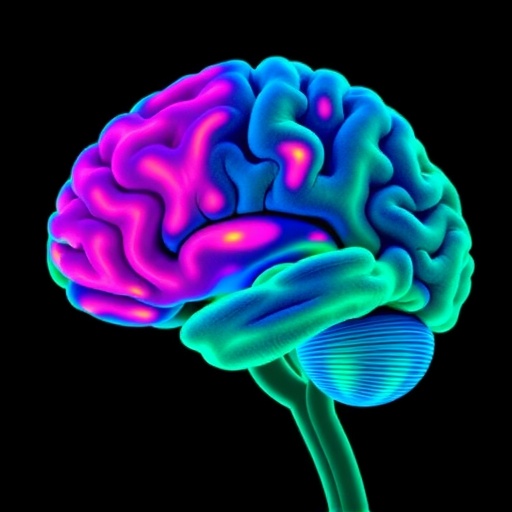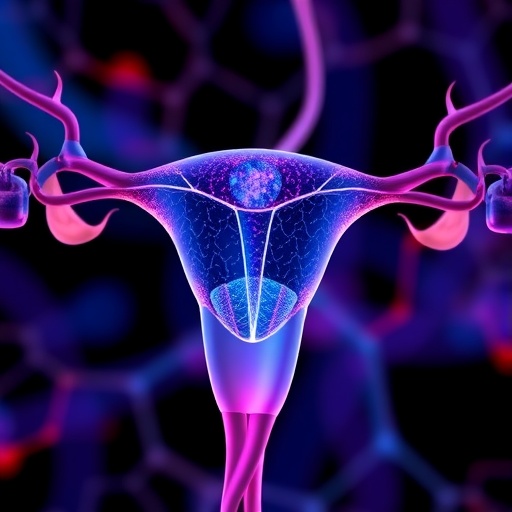In an unprecedented advancement within the realm of neuroimaging, a groundbreaking research study has emerged that introduces the revolutionary potential of 5T chemical exchange saturation transfer (CEST) imaging. This innovative technology, as documented in a recent article published in the Journal of Translational Medicine, promises to significantly enhance the grading and genotyping of gliomas, a type of brain tumor known for its aggressive nature and considerable variability in prognosis. The researchers, Zhou and colleagues, have meticulously explored the advantages of this new imaging methodology, which could serve as a formidable supplement to conventional 3T diffusion and perfusion MRI techniques.
The study highlights how gliomas, classified by grade and genotype, present diagnostic challenges due to the intricate biological behaviors that manifest in these tumors. Traditionally, the grading of gliomas has relied heavily on histopathological evaluation, often involving invasive procedures such as biopsies. However, the introduction of 5T CEST imaging marks a shift toward non-invasive diagnostic tools that could streamline the process of tumor assessment and elevate the accuracy of glioma classification.
One of the pivotal findings from this research is the superior resolution and sensitivity that 5T CEST imaging provides over its 3T counterpart. The enhanced magnetic field strength of 5T not only enhances signal-to-noise ratios but also facilitates the detection of subtle metabolic changes within the tumor microenvironment. This capability allows clinicians and researchers to glean insights into the tumor’s biochemical status, ultimately aiding in the determination of appropriate therapeutic strategies.
The research team undertook a comprehensive study involving various glioma samples that underwent both 5T CEST imaging and traditional imaging methods. The results were compelling; the team observed that 5T CEST imaging was able to discern differences in tumor characteristics that were not detectable at lower field strengths. This difference suggests that 5T CEST imaging may not only improve the grading of gliomas but could also provide critical insights into the underlying genotypic landscapes of these tumors.
Furthermore, the authors emphasized the role of chemical exchange saturation transfer as a vital component of this advanced imaging approach. By harnessing the principles of molecular chemistry, CEST imaging exploits the exchange of protons between water and specific metabolites, enabling the identification of unique spectral signatures that are indicative of tumor biology. This sophisticated technique may revolutionize the way gliomas are viewed, shifting the focus from merely structural imaging to a more nuanced understanding of tumor biochemistry.
Through their detailed analysis, Zhou and colleagues also noted the potential for 5T CEST imaging to refine patient stratification in clinical trials. By generating more accurate representation of tumor biology, clinicians could tailor treatment protocols based on individual patient profiles, thereby amplifying the effectiveness of therapeutic interventions. This personalized approach represents a significant leap forward in oncological imaging, as it aligns treatment options with the unique characteristics of each glioma.
As gliomas are notoriously difficult to manage due to their diverse biological behaviors and treatment responses, the insights gained from 5T CEST imaging could lead to more informed decisions regarding therapeutic planning. The authors posit that the integration of such imaging techniques into clinical practice could not only enhance diagnostic accuracy but also elongate survival rates for patients grappling with these challenging tumors.
The logistical implications of introducing 5T CEST imaging into clinical settings were also candidly discussed in the study. As the technology requires advanced MRI equipment, there is a necessary ramp-up period that medical institutions must consider. However, the authors argue that the long-term benefits of improved diagnostic capabilities and the prospective reduction in invasive procedures could outweigh the initial hurdles associated with adopting such a cutting-edge technique.
In considering the broader impact of this research, it becomes evident that the field of neuro-oncology stands to gain significantly from these findings. Beyond gliomas, the fundamental principles underlying CEST imaging may be applicable to a variety of other neoplastic conditions, highlighting a potential pathway for the development of novel biomarkers that could transform cancer diagnosis and management as a whole.
In summary, the study elucidates critical advancements in glioma imaging and grading, offering hope for a future where less invasive and more precise diagnostic methods are the norm. With the continued evolution of imaging technologies, the potential for improved patient outcomes becomes more tangible, paving the way for innovations that reshape the landscape of cancer care.
The implications of this research extend far beyond the confines of gliomas. The scientific community is poised to explore the breadth of CEST imaging applications in different tumors and medical conditions. Continued exploration of this technology will undoubtedly enhance our understanding of tumor biology, thereby driving forward the mission to tailor more effective treatment paradigms tailored to the intricacies of individual tumors.
As we embrace the transformative potential of 5T CEST imaging, it is crucial for ongoing collaborations among researchers, clinicians, and technologists to ensure that these advancements are translated into clinical practice. The path forward may be fraught with challenges, but the collective vision of improved patient outcomes in neuro-oncology is a powerful motivator for all stakeholders involved in this journey.
Moreover, with continuous innovations in imaging technology and techniques, the future landscape of oncological imaging is set to become even more integrated with other modalities such as genetics, liquid biopsies, and molecular profiling. The synergistic effect of these advancements promises a new era of personalized medicine, where glioma grading and genotyping predictions will be coupled with comprehensive biological insights, ultimately leading to enriched patient management strategies.
In conclusion, the study spearheaded by Zhou et al. provides a remarkable glimpse into the future of glioma assessment and management through the lens of advanced imaging technology. As the scientific community continues to embrace innovations and evolve methodologies, it is crucial to remain steadfast in our commitment to enhancing cancer care and improving survival outcomes for patients battling gliomas and other formidable malignancies.
Subject of Research: Glioma grading and genotyping using advanced imaging techniques
Article Title: 5T Chemical Exchange Saturation Transfer Imaging Improves Glioma Grading and Genotyping Prediction: A Supplement to 3T Diffusion and Perfusion MRI
Article References:
Zhou, J., Xu, D., Sun, W. et al. 5T chemical exchange saturation transfer imaging improves glioma grading and genotyping prediction: a supplement to 3T diffusion and perfusion MRI.
J Transl Med (2025). https://doi.org/10.1186/s12967-025-07464-5
Image Credits: AI Generated
DOI: 10.1186/s12967-025-07464-5
Keywords: glioma, MRI, chemical exchange saturation transfer, imaging techniques, neuro-oncology, grading, genotyping, personalized medicine
Tags: 5T chemical exchange saturation transfer imagingbrain tumor classification techniquesdiagnostic challenges in glioma evaluationenhanced MRI technology for gliomasglioma grading and genotypinghistopathological evaluation alternativesinnovative imaging methodologies in oncologyJournal of Translational Medicine research findingsneuroimaging advancementsnon-invasive tumor assessmentsuperior resolution in brain imagingZhou research study on gliomas




